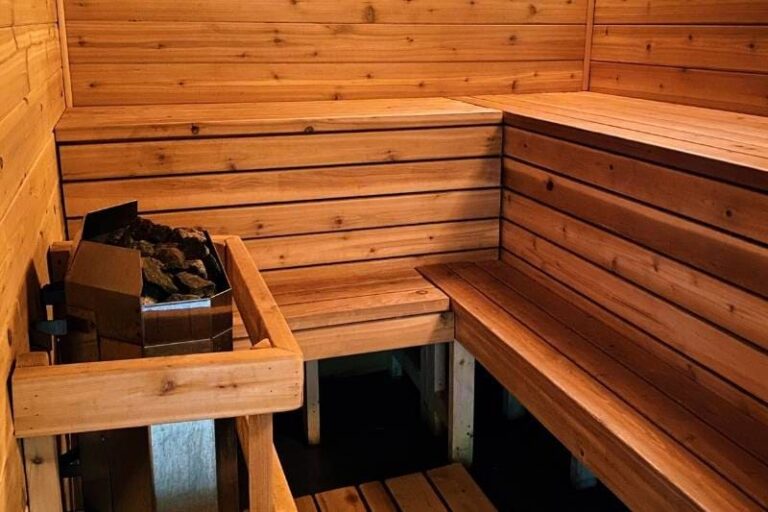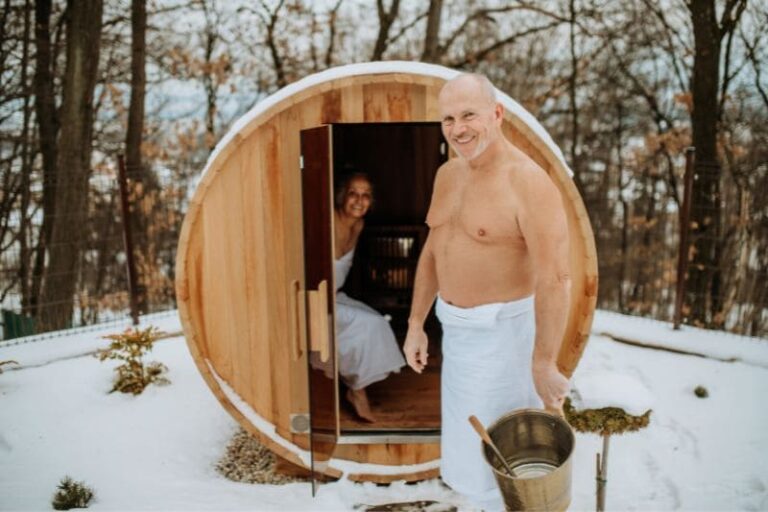Sauna and Spa Market (CAGR 2023-2030): Global Growth Analysis and Forecast

The sauna and spa market is estimated to reach USD 146.05 billion in 20251. The market blends old and new – from basic Finnish saunas to modern rooms you can control with your phone. As more people focus on health and stress relief, the market keeps growing. By 2030, it should reach USD 208.99 billion [1].
Our analysis looks at what makes this market grow. We cover new technology, what customers want, and how different regions are doing. From hotel spas to home saunas, we show you what’s pushing the market forward.
Table of Contents
Sauna and Spa Market Analysis and Segmentation
The global sauna and spa market is a highly fragmented industry with a wide range of players. This market is driven by increasing demand for customized and innovative services, as well as the growing wellness industry.
Market Overview
- The sauna and spa market is experiencing significant growth, estimated at USD 146.05 billion in 2025 [1].
- In 2024, the market was valued at approximately USD 135.95 billion.
- The market projects strong growth through 2030, reaching USD 208.99 billion at a CAGR of 7.43% [1].
- Europe is experiencing the fastest growth in the sauna and spa market, while North America remains the largest market.
| REPORT COVERAGE | DETAILS |
|---|---|
| Market size in 2024 | USD 135.95 Billion |
| Market size in 2025 | USD 146.05 Billion |
| CAGR from 2023 – 2030 | 7.43% |
| Projected market size by 2030 | USD 208.99 Billion |
This indicates significant growth and ample opportunities for businesses operating in this sector.
The market is highly competitive, with the major players being:
- KLAFS Group
- Harvia PLC
- Sauna King
- TyloHelo Oy
- Duravit
- Physiotherm
- Effegibi
- SAWO Inc.
- Narvi Oy
Market Drivers
The market continues to expand through increased consumer interest in wellness services and health-focused amenities.
The growing wellness industry, focusing on self-care and holistic healing, remains a key market driver. Rising disposable incomes and changing millennial spending patterns fuel market growth, with this generation viewing sauna and spa services as essential wellness components2.
Health consciousness among working professionals drives demand for stress-reduction and relaxation services. The geriatric population increasingly adopts sauna and spa treatments, creating substantial market opportunities [1].
Market Restraints
While the sauna and spa industry has largely recovered from COVID-19’s impact, the pandemic has created lasting changes in consumer behavior and operational practices. Enhanced hygiene protocols and reduced capacity requirements continue to influence facility design and operating costs. Some markets maintain modified health and safety measures, particularly in shared wellness spaces.
High initial costs present challenges for market growth. Traditional saunas require investments between USD 3,600 – USD 14,000, while steam rooms can cost USD 4,000 – USD 8,000. Ongoing maintenance expenses and energy costs affect operational profitability.
Related: How Much Does a Sauna Cost

Market Opportunities
Despite the challenges, the sauna and spa market presents several opportunities for growth and development. Technological advancements create new market opportunities. Smart saunas with app integration now represent 30% of new product launches3, meeting consumer demands for personalized experiences.
The growing tourism and hospitality industry also creates a favorable environment for the expansion of sauna and spa services.
Regional Market Analysis
North America holds the largest market share at 27.89% as of 20244. Europe shows the fastest growth rate, with Finland leading adoption – maintaining 3.3 million saunas for its 5.5 million population [1]. The Asia Pacific region projects a 7.2% CAGR through 20305.
Market Segmentation
The sauna and spa market can be segmented based on various factors, including application, type of market, and geography:
| Segment | Description |
|---|---|
| Application | 1. Hotel/Hospitality 2. Gym/Fitness and Spas 3. Household 4. Others |
| Type of Market | 1. New 2. Renovation/Replacement |
| Geography | 1. North America 2. Europe 3. Asia-Pacific 4. Latin America 5. Middle East & Africa |
Understanding market segmentation helps businesses identify target markets and tailor their strategies accordingly.
Overview of Saunas and Spas
Saunas and spas have been cherished for their rejuvenating effects since ancient times and continue to be popular today. They offer not only a blissful escape but also a range of health benefits, making them an essential part of wellness routines worldwide. Let’s explore the different types of saunas and the various spa treatments that can enhance our well-being.
Types of Saunas
Traditional saunas dominate with a 35% market share, followed by infrared saunas at 30%, electric saunas at 20%, steam rooms at 10%, and outdoor saunas at 5%6. Each type offers unique benefits.
- Traditional Finnish Saunas: These saunas use dry heat generated by hot stones to create a soothing environment. They are known for their strong heat, which promotes sweating and detoxification.
- Steam Baths: Steam baths, also known as Turkish baths or hammams, use moist heat to create a relaxing atmosphere. The steam helps open up pores, cleanse the skin, and improve respiratory health.
- Infrared Saunas: Infrared saunas utilize infrared light to heat the body directly, providing a gentler and more comfortable experience. They are believed to penetrate the skin deeper, offering benefits such as pain relief and improved circulation.
Related Article: Sauna benefits for the skin
Types of Spa Treatments
Spa treatments encompass a wide range of services aimed at providing holistic healing experiences. These treatments can address both physical and mental well-being. Some popular spa treatments include:
- Massages: Massages reduce muscle tension, promote relaxation, and improve blood circulation.
- Facials: Facials help cleanse, exfoliate, and nourish the skin, leaving it refreshed and rejuvenated.
- Manicures and Pedicures: These treatments focus on the care of hands, nails, and feet, leaving them pampered and well-groomed.
Regular spa treatments bring numerous benefits to both the body and mind. They can help in stress reduction, pain relief, weight reduction, and overall relaxation.
Also Read: Should You Sauna Before or After Massage
| Benefits of Saunas | Benefits of Spa Treatments |
|---|---|
| • Promotes sweating and detoxification | • Reduces muscle tension and promotes relaxation |
| • Enhances blood circulation | • Cleanses and rejuvenates the skin |
| • Relieves joint and muscle pain | • Improves mental well-being |
| • Boosts the immune system | • Provides a sense of overall well-being |
Smart Technology Integration
Modern saunas incorporate advanced features for enhanced user experience. Smart controls allow remote operation through mobile devices, while automated systems optimize temperature and humidity levels7. These innovations improve convenience and energy efficiency.
Energy Efficiency and Sustainability
Energy-efficient designs reduce power consumption significantly. Traditional saunas use 9-13 kilowatt-hours per session, while infrared options consume only 1.5-3.5 kilowatt-hours8. Monthly savings reach USD 12-15 for infrared saunas compared to traditional models.
Consumer Behavior and Demographics
Age and Income Distribution
The millennial age group leads sauna and spa service adoption, viewing these as essential wellness practices rather than luxury items [1]. The geriatric population shows steady growth in usage rates, particularly for therapeutic benefits.
Middle and high-income consumers make up the main market segment. The expanding middle class in Asia-Pacific and Latin America regions creates new market opportunities [4].
Usage Patterns and Preferences
Consumer preferences vary between traditional and modern sauna types:
- Smart-controlled saunas with app features gain popularity
- Home installations rise as private wellness spaces become preferred
- Commercial usage remains strong in fitness centers and hotels9
Future Market Outlook
Technological Innovations
Sauna technology advances reshape the market:
- Smart features in 30% of new product launches [3]
- Mobile app integration for remote operation
- Energy-efficient designs reducing power consumption
- Eco-friendly materials in 25% of new products [3]
Growth Projections
Market forecasts paint a positive picture [6]:
- Traditional saunas: 5.5% CAGR to 2030
- Infrared saunas: 7.2% CAGR to 2030
- Electric saunas: 6.0% CAGR to 2030
- Steam rooms: 4.8% CAGR to 2030
- Outdoor saunas: 6.5% CAGR to 2030
Conclusion
The sauna and spa market is poised for significant growth in the coming years, driven by several key factors. Firstly, there is a growing awareness among consumers about the numerous health and wellness benefits offered by saunas and spas. While North America maintains market leadership, emerging regions demonstrate rapid growth.
As people become more health-conscious, they are seeking out relaxation and rejuvenation experiences, creating a demand for these services. Moreover, technological advancements and eco-friendly options are playing a crucial role in shaping the future of the sauna and spa market.
The growing tourism and hospitality industry, coupled with the rising popularity of wellness retreats, presents immense potential for growth. To stay ahead in this competitive landscape, companies need to focus on delivering customized and innovative services that align with evolving consumer preferences.
FAQ about Sauna and Spa Market
What years does the Sauna and Spa Market report cover?
The Sauna and Spa Market report covers historical data from 2020 to 2024 and provides forecasts from 2025 to 2030. The market size in 2024 was USD 135.20 billion.
Which application segment holds the largest share in the Sauna and Spa Market?
The Hotel/Hospitality segment holds the largest share in the Sauna and Spa Market. Hotels and resorts account for 45% of total market revenue due to rising wellness tourism and luxury spa services.
What are the average operating costs for different types of saunas?
The average operating costs for saunas vary by type. Traditional saunas cost USD 12-15 per month in electricity. Infrared saunas cost USD 5-8 per month. Steam rooms cost USD 15-20 per month in combined water and electricity expenses.
What is the average price range for commercial sauna installations?
The average price range for commercial sauna installations starts at USD 8,000 for basic models. Mid-range installations cost USD 15,000-25,000. Luxury commercial saunas with smart features cost USD 30,000-50,000.
How long is the typical return on investment for commercial sauna installations?
The typical return on investment for commercial sauna installations is 18-24 months. Hotels and spas recover installation costs through membership fees and increased room rates. Wellness centers see full cost recovery within 2 years of operation.
Resources
- https://www.mordorintelligence.com/industry-reports/sauna-and-spa-market ↩︎
- https://www.giiresearch.com/report/infi1626397-global-sauna-spa-market.html ↩︎
- https://www.globalgrowthinsights.com/market-reports/far-infrared-sauna-market-104944 ↩︎
- https://www.grandviewresearch.com/industry-analysis/sauna-market-report ↩︎
- https://www.grandviewresearch.com/horizon/outlook/sauna-market/asia-pacific ↩︎
- https://market.us/report/sauna-market/ ↩︎
- https://kreatecube.com/blog/bathroom/tech-forward-saunas-incorporating-smart-technologies-in-sauna-design ↩︎
- https://www.parkerandsons.com/blog/how-much-electricity-does-a-sauna-use ↩︎
- https://www.giiresearch.com/report/grvi1530590-sauna-market-size-share-trends-analysis-report-by.html ↩︎
Subscribe Now
Sign up & Stay in the Loop for Exclusive Product Offers and all our Fresh Content!

As a Chartered Accountant turned sauna enthusiast, I bring a unique blend of analytical skills and hands-on experience to the world of heat therapy. With over a decade dedicated to researching and testing sauna products and practices, I’ve developed a deep understanding of this field. A the founder of HomeInDepth.com, I provide reliable, easy-to-understand information on all aspects of saunas. My goal is to guide you through every step of your sauna journey, offering meticulously researched, unbiased advice to help you make informed decisions and create your perfect sauna experience. I’m always happy to hear from sauna lovers like you—feel free to leave questions or share your own tips in the comments below so we can learn together. Contact me on:








One Comment